- Home
- Conn Iggulden
The Dangerous Book for Boys
The Dangerous Book for Boys Read online
Epigraph
* * *
“Don’t worry about genius and don’t worry about not being clever. Trust rather to hard work, perseverance, and determination. The best motto for a long march is ‘Don’t grumble. Plug on.’
“You hold your future in your own hands. Never waver in this belief. Don’t swagger. The boy who swaggers—like the man who swaggers—has little else that he can do. He is a cheap-Jack crying his own paltry wares. It is the empty tin that rattles most. Be honest. Be loyal. Be kind. Remember that the hardest thing to acquire is the faculty of being unselfish. As a quality it is one of the finest attributes of manliness.
“Love the sea, the ringing beach and the open downs.
“Keep clean, body and mind.’”
—Sir Frederick Treves, Bart, KCVO, CB, Sergeant in Ordinary to HM the King, Surgeon in Ordinary to HRH Prince of Wales, written at 6 Wimpole Street, Cavendish Sqare, London, on September 2, 1903, on the occasion of the twenty-fifth anniversary of the Boy’s Own Paper
* * *
Dedication
To all of those people who said “You have to include . . .”
until we had to avoid telling anyone else about the book
for fear of the extra chapters. Particular thanks to Bernard
Cornwell, whose advice helped us through a difficult time and
Paul D’Urso, a good father and a good friend.
Contents
Cover
Title Page
Epigraph
Dedication
I Didn’t Have This Book When I Was a Boy
Essential Gear
The Greatest Paper Airplane in the World
The Seven Wonders of the Ancient World
The Five Knots Every Boy Should Know
Questions About the World—Part One: Why is a summer day longer than a winter day? Why is it hotter at the Equator? What is a vacuum? What is latitude and longitude? How do you tell the age of a tree?
Making a Battery
How to Play Stickball
Fossils
Building a Treehouse
The Rules of Soccer
Dinosaurs
Making a Bow and Arrow
Understanding Grammar—Part One
Table Football
Fishing
Timers and Tripwires
Baseball’s “Most Valuable Players”
Famous Battles—Part One: Thermopylae, Cannae, Caesar’s Invasions of Britain, Hastings, Crécy
The Rules of Rugby Union and Rugby League
Spies—Codes and Ciphers
U.S. Naval Flag Codes
Making Crystals
Extraordinary Stories—Part One: Scott and the Antarctic
Making a Go-Cart
Insects and Spiders
Juggling
Questions About the World—Part Two: How do we measure the earth’s circumference? Why does a day have twenty-four hours? How far away are the stars? Why is the sky blue? Why can’t we see the other side of the moon? What causes the tides?
Astronomy—the Study of the Heavens
Making a Paper Hat, Boat and Water Bomb
Navajo Code Talkers’ Dictionary
Understanding Grammar—Part Two
Girls
Marbling Paper
Cloud Formations
Famous Battles—Part Two: Waterloo, Balaclava, Rorke’s Drift, the Somme, Lexington and Concord, the Alamo, and Gettysburg
First Aid
The Fifty States
Map of the United States
Mountains of the United States
Extraordinary Stories—Part Two: The Wright Brothers
Making Cloth Fireproof
Building a Workbench
Pocket Light
Five Pen-and-Paper Games
The Golden Age of Piracy
A Simple Electromagnet
Secret Inks
Sampling Shakespeare
Extraordinary Stories—Part Three: Touching the Void
Grinding an Italic Nib
Navigation
The Declaration of Independence
The Moon
Skipping Stones
Pinhole Projector
Charting the Universe
Dog Tricks
Wrapping a Package in Brown Paper and String
Star Maps: What You See When You Look Up . . .
Making a Periscope
Seven Poems Every Boy Should Know
Coin Tricks
Light
Latin Phrases Every Boy Should Know
How to Play Poker
Extraordinary Stories—Part Four: Douglas Bader
Marbles
A Brief History of Artillery
The Origin of Words
The Solar System: A Quick Reference Guide
The Ten Commandments
Common Trees
Extraordinary Stories—Part Five: Robert the Bruce
The Game of Chess
Hunting and Cooking a Rabbit
Tanning a Skin
Time Line of Early American History
Growing Sunflowers
Questions About the World—Part Three: How do ships sail against the wind? Where does cork come from? What causes the wind? What is chalk?
Role-Playing Games
Understanding Grammar—Part Three: Verbs and Tenses
Seven Modern Wonders of the World
Books Every Boy Should Read
Standard and Metric Measurements
Dangerous Book for Boys Badges
Illustrations
Acknowledgments
Also by Conn Iggulden
Copyright
About the Publisher
I Didn’t Have This Book When I Was a Boy
IN THIS AGE OF video games and cell phones, there must still be a place for knots, tree houses, and stories of incredible courage. The one thing that we always say about childhood is that we seemed to have more time back then. This book will help you recapture those Sunday afternoons and long summers—because they’re still long if you know how to look at them.
Boyhood is all about curiosity, and men and boys can enjoy stories of Scott of the Antarctic and Joe Simpson in Touching the Void as much as they can raid a shed for the bits to make an electromagnet, or grow a crystal, build a go-cart, and learn how to find north in the dark. You’ll find famous battles in these pages, insects and dinosaurs—as well as essential Shakespeare quotes, how to cut flint heads for a bow and arrow, and instructions on making the best paper airplane in the world.
How do latitude and longitude work? How do you make secret ink, or send the cipher that Julius Caesar used with his generals? You’ll find the answers inside. It was written by two men who would have given away the cat to get this book when they were young. It wasn’t a particularly nice cat. Why did we write it now? Because these things are important still and we wished we knew them better. There are few things as satisfying as tying a decent bowline knot when someone needs a loop, or simply knowing what happened at Gettysburg and the Alamo. The tales must be told and retold, or the memories slowly die.
The stories of courage can be read as simple adventures—or perhaps as inspiration, examples of extraordinary acts by ordinary people. Since we wrote them, it’s been a great deal harder to hop about and curse when one of us stubs a toe. If you read Douglas Bader’s chapter, you’ll see why. They’re not just cracking stories, they’re part of a culture, a part we really don’t want to see vanish.
Is it old-fashioned? Well, that depends. Men and boys today are the same as they always were, and interested in the same things. They may conquer different worlds when they grow up, but they’ll still wa
nt these stories for themselves and for their sons. We hope in years to come that this will be a book to dig out of the attic and give to a couple of kids staring at a pile of wood and wondering what to do with it.
When you’re a man, you realize that everything changes, but when you’re a boy, you know different. The camp you make today will be there forever. You want to learn coin tricks and how to play poker because you never know when the skills will come in handy. You want to be self-sufficient and find your way by the stars. Perhaps for those who come after us, you want to reach them. Well, why not? Why not?
Conn Iggulden and Hal Iggulden
Essential Gear
IT ISN’T THAT EASY these days to get hold of an old tobacco tin—but they are just the right size for this sort of collection. One of the authors once took a white mouse into school, though considering what happened when he sat on it, that is not to be recommended. We think pockets are for cramming full of useful things.
1. SWISS ARMY KNIFE.
Still the best small penknife. It can be carried in luggage on planes, though not in hand luggage. It is worth saving up for a high-end model, with as many blades and attachments as you can get. That said, there are good ones to be had for about $30. They are useful for jobs requiring a screwdriver, removing splinters and opening bottles of beer and wine, though this may not be a prime consideration at this time.
Leather holders can also be purchased and the best ones come with a few extras, like a compass, matches, pencil, paper, and Band-Aid.
2. COMPASS.
These are satisfying to own. Small ones can be bought from any camping or outdoor store and they last forever. You really should know where north is, wherever you are.
3. HANDKERCHIEF.
There are many uses for a piece of cloth, from preventing smoke inhalation or helping with a nosebleed to offering one to a girl when she cries. Big ones can even be made into slings. They’re worth having.
4. BOX OF MATCHES.
It goes without saying that you must be responsible. Matches kept in a dry tin or inside a plastic bag can be very useful on a cold night when you are forced to sleep in a field. Dipping the tips in wax makes them waterproof. Scrape the wax off with a fingernail when you want to light them.
5. A SHOOTER.
Your favorite big marble.
6. NEEDLE AND THREAD.
Again, there are a number of useful things you can do with these, from sewing up a wound on an unconscious dog to repairing a torn shirt. Make sure the thread is strong and then it can be used for fishing.
7. PENCIL AND PAPER.
If you see a crime and want to write down a license plate number or a description, you are going to need one. Alternatively, it works for shopping lists or practically anything.
8. SMALL FLASHLIGHT.
There are ones available for key rings that are small and light. If you are ever in darkness and trying to read a map, a flashlight of any kind will be useful.
9. MAGNIFYING GLASS.
For general interest. Can also be used to start a fire.
10. BAND-AIDS.
Just one or two, or better still, a piece from a cloth bandage roll that can be cut with penknife scissors. They probably won’t be used, but you never know.
11. FISHHOOKS.
If you have strong thread and a tiny hook, you only need a stick and a worm to have some chance of catching something. Put the hook tip into a piece of cork, or you’ll snag yourself on it.
The Greatest Paper Airplane in the World
IN THE 1950S, an elementary school principal found a boy throwing paper airplanes from a high window. The head was considering punishments when he noticed the plane was still in the air, flying across the playground below. The boy escaped a detention, but he did have to pass on the design to the principal—who passed it on to his own children. You will find more complicated designs. You may be sold the idea that the best planes require scissors and lessons in origami. This is nonsense.
The plane on the right—the Harrier—is simple, fast and can be made from a letter-size sheet of paper. It is the best long-distance glider you’ll ever see—and with a tweak or two, the best stunt plane. It has even won competitions. One was to clear the entire road from a hotel balcony next to Windsor Castle in London on New Year’s Eve. Four other planes hit the tarmac—this one sailed clear across. The one on the left—the Bulldog Dart—is a simple dart, a warm-up plane, if you like. It’s a competent glider.
THE BULLDOG DART
Fold a letter-size sheet of paper lengthways to get a center line.
Fold two corners into the center line, as in the picture.
Turn the paper over and fold those corners in half, as shown.
Fold the pointy nose back on itself to form the snub nose. You might try folding the nose underneath, but both ways work well.
Fold the whole plane lengthways, as shown.
Finally, fold the wings in half to complete the Bulldog Dart.
Good—now you know a design that really works. You may have noticed the insectlike plane in the middle of the first picture. It does have complicated “floats” and inverse folds. However, it just doesn’t fly very well and neither do most of the overcomplicated designs. We think that matters. Yes, it looks like a locust, but if it nose-dives, what exactly is the point?
Here, then, is the gold standard. It flies.
THE HARRIER
Begin in the same way as the Bulldog Dart. Fold in half lengthways to find your center line and then fold two corners into that line, as shown.
Fold that top triangle down, as you see in the picture. It should look like an envelope.
Fold in the second set of corners. You should be able to leave a triangular point sticking out.
Fold the triangle over the corners to hold them down.
Fold in half along the spine, leaving the triangle on the outside, as shown.
Finally, fold the wings back on themselves, finding your halfway line carefully. The more care you take to be accurate with these folds, the better the plane will fly.
This plane does well at slower launch speeds. It can stall at high speed, but if you lift one of the flaps slightly at the back, it will swoop and return to your hand or fly in a great spiral. Fiddle with your plane until you are happy with it. Each one will be slightly different and have a character of its own.
The Seven Wonders of the Ancient World
THE FAMOUS SEVEN WONDERS of the ancient world were: the Great Pyramid of Cheops at Giza, the Hanging Gardens of Babylon, the Temple of Artemis at Ephesus, the Mausoleum at Halicarnassus, the Colossus of Rhodes, the Statue of Zeus at Olympia and the Pharos Lighthouse at Alexandria. Only the pyramid at Giza survives to the modern day.
1.The Great Pyramid is the largest tomb ever built, created for the 4th Dynasty Egyptian pharaoh Khufu (2898–2875 BC), though he is better known by the Greek form of his name, Cheops.
It is one of the three great pyramids at Giza near Cairo, the other two being constructed for the pharaohs Menkaure and Khafre. The largest, for Cheops, was the tallest structure on Earth for more than four thousand years, until the nineteenth century AD. Though the capstone was removed at some point, it would have stood at 481 ft (146.5 m) high.
The base is perfectly square—a feat of astonishing accuracy considering the sheer size of it. Each side of the base is 755 ft 8 in (231 m) long and each side slopes at 51 degrees, 51 minutes. It is composed of two million blocks of stone, each one weighing more than two tons. They fit together so well that not even a knife blade can be slid between them.
2.The Hanging Gardens of Babylon were built in what is now modern-day Iraq, on the banks of the river Euphrates. They were created by King Nebuchadnezzar for his queen between the seventh and sixth centuries BC.
Famously, they employed complex hydraulic systems to raise thousands of gallons from the river and keep the gardens blooming. We can only guess at the exact method, but an Archimedean screw, as shown here, may have been employed.
/>
3.The Temple of Artemis (Diana) at Ephesus in what is modern-day Turkey is said to have awed Alexander the Great with its extraordinary beauty, though the citizens refused his offer to bear the cost of a restoration. Originally built in the sixth century BC, the temple was destroyed and rebuilt on more than one occasion, though the most famous was the night of Alexander’s birth, when a man named Herostratus burned it so that his name would be remembered—one of the greatest acts of vandalism of all time. It finally fell into ruin around the third century AD.
4.The Mausoleum at Halicarnassus was created for King Mausolus of Persia, who ruled from 377 to 353 BC. Halicarnassus is now the city of Bodrum in Turkey. On top of the rectangular tomb chamber, thirty-six columns supported a stepped pyramid crowned by statues of Mausolus and his wife (and sister) Artemisia in a chariot, reaching a height of approximately 140 ft or 42.5 m. It was destroyed in 1522 when crusading Knights of St John used the stone to build a castle that still stands today. The polished marble blocks of the tomb are visible in the walls. From Mausolus, we have the word “mausoleum,” meaning an ornate tomb.
5.The Statue of Zeus at Olympia is also lost to the modern world. Only images on coins and descriptions survive to tell us why the statue was considered so astonishing in the fifth century BC.
Olympia was the site of the ancient Olympic games—giving us the word. The site was sacred to Zeus, and Phidias of Athens was commissioned to carve the statue. The statue was of wood layered in gold for the cloth and ivory sheets for the flesh. In his right hand stood the winged figure of the goddess Victory (Nike), made of ivory and gold. In his left, he held a scepter made of gold, with an eagle perched on the end.
The Roman emperor Caligula tried to transfer the statue to Rome in the first century AD, but the scaffolding collapsed under the weight and the attempt was abandoned. Later on, the statue was moved to Constantinople and remained there until it was destroyed by fire in the fifth century.

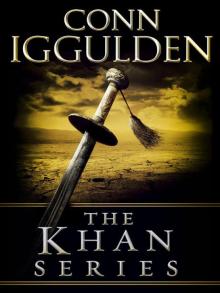 The Khan Series 5-Book Bundle
The Khan Series 5-Book Bundle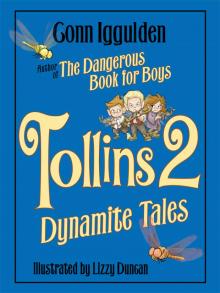 Tollins 2: Dynamite Tales
Tollins 2: Dynamite Tales Tollins: Explosive Tales for Children
Tollins: Explosive Tales for Children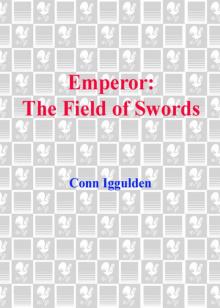 The Field of Swords
The Field of Swords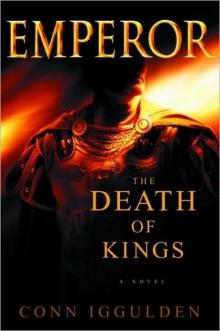 The Death of Kings
The Death of Kings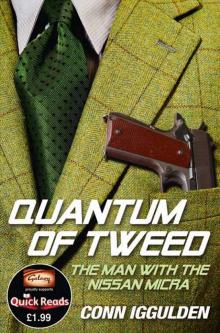 Quantum of Tweed: The Man With the Nissan Micra
Quantum of Tweed: The Man With the Nissan Micra Bones of the Hills
Bones of the Hills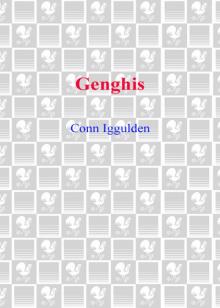 Genghis: Birth of an Empire
Genghis: Birth of an Empire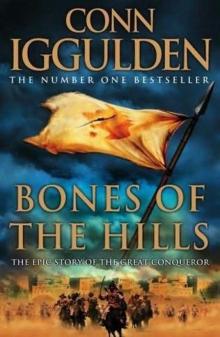 The Gates of Rome
The Gates of Rome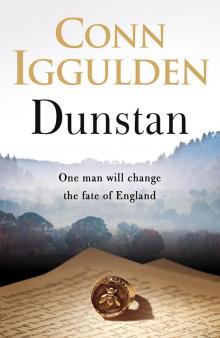 Dunstan
Dunstan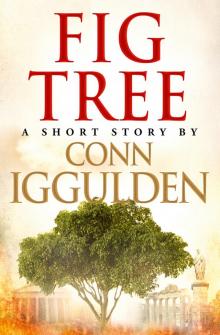 Fig Tree
Fig Tree The Gates of Athens
The Gates of Athens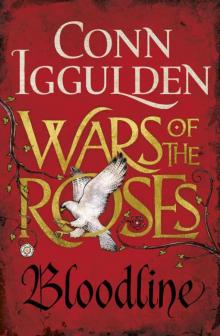 Stormbird
Stormbird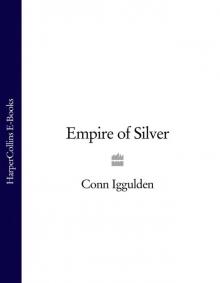 Khan: Empire of Silver
Khan: Empire of Silver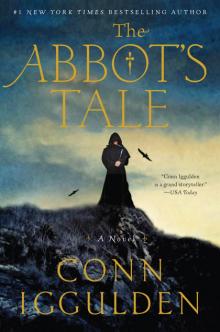 The Abbot's Tale
The Abbot's Tale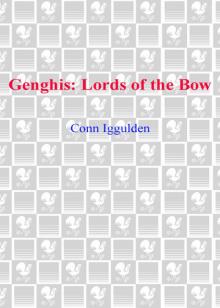 Gengis: Lords of the Bow
Gengis: Lords of the Bow The Gods of War
The Gods of War Blackwater
Blackwater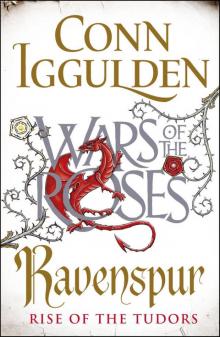 Ravenspur: Rise of the Tudors
Ravenspur: Rise of the Tudors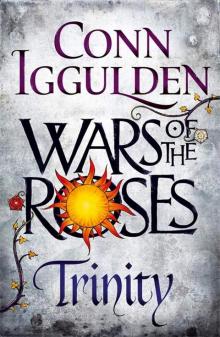 Wars of the Roses: Trinity (War of the Roses Book 2)
Wars of the Roses: Trinity (War of the Roses Book 2) The Gods of war e-4
The Gods of war e-4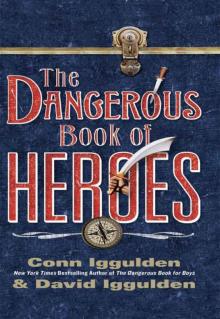 The Dangerous Book of Heroes
The Dangerous Book of Heroes Stormbird wotr-1
Stormbird wotr-1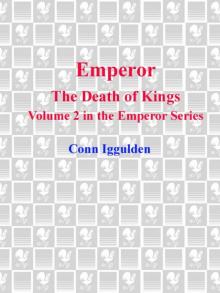 Emperor: The Death of Kings
Emperor: The Death of Kings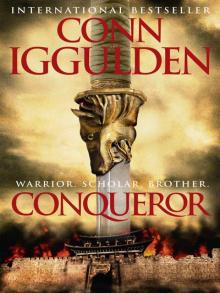 Conqueror (2011) c-5
Conqueror (2011) c-5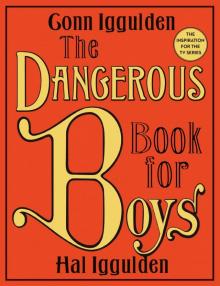 The Dangerous Book for Boys
The Dangerous Book for Boys Genghis Lords of the Bow
Genghis Lords of the Bow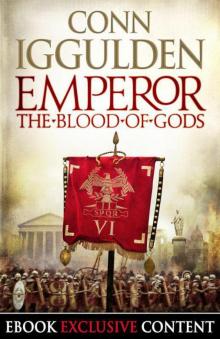 Emperor: The Blood of Gods (Special Edition) (Emperor Series, Book 5)
Emperor: The Blood of Gods (Special Edition) (Emperor Series, Book 5)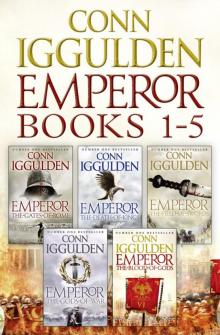 The Emperor Series: Books 1-5
The Emperor Series: Books 1-5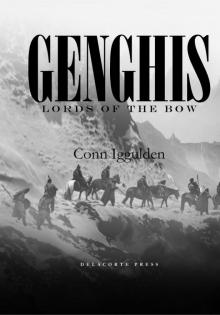 Lords of the Bow c-2
Lords of the Bow c-2 Lords of the Bow
Lords of the Bow Quantum of Tweed
Quantum of Tweed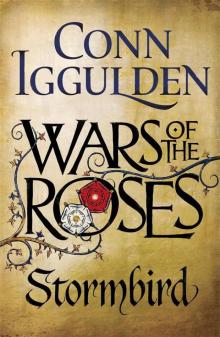 Wars of the Roses 01 - Stormbird
Wars of the Roses 01 - Stormbird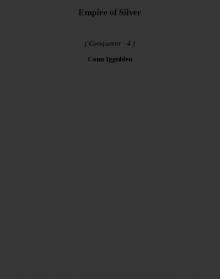 Empire of Silver c-4
Empire of Silver c-4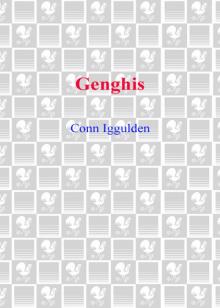 Birth of an Empire
Birth of an Empire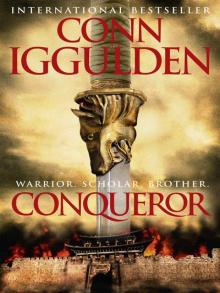 Conqueror (2011)
Conqueror (2011) Wars of the Roses: Bloodline: Book 3 (The Wars of the Roses)
Wars of the Roses: Bloodline: Book 3 (The Wars of the Roses) Bones Of the Hills c-3
Bones Of the Hills c-3 Empire of Silver
Empire of Silver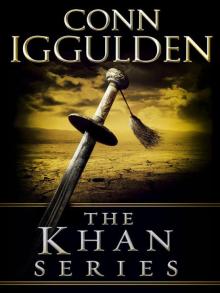 The Khan Series 5-Book Bundle: Genghis: Birth of an Empire, Genghis: Bones of the Hills, Genghis: Lords of the Bow, Khan: Empire of Silver, Conqueror
The Khan Series 5-Book Bundle: Genghis: Birth of an Empire, Genghis: Bones of the Hills, Genghis: Lords of the Bow, Khan: Empire of Silver, Conqueror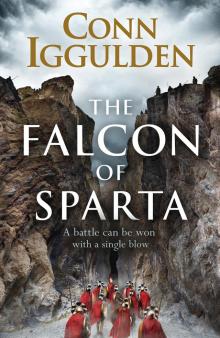 The Falcon of Sparta
The Falcon of Sparta Explosive Tales for Children
Explosive Tales for Children